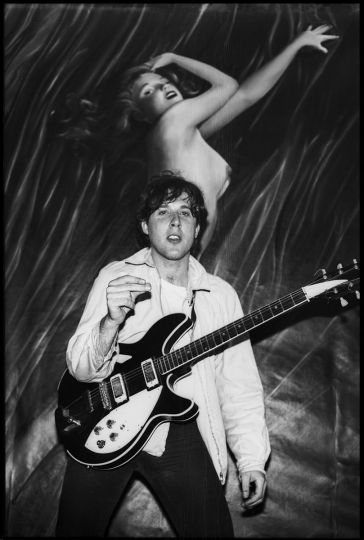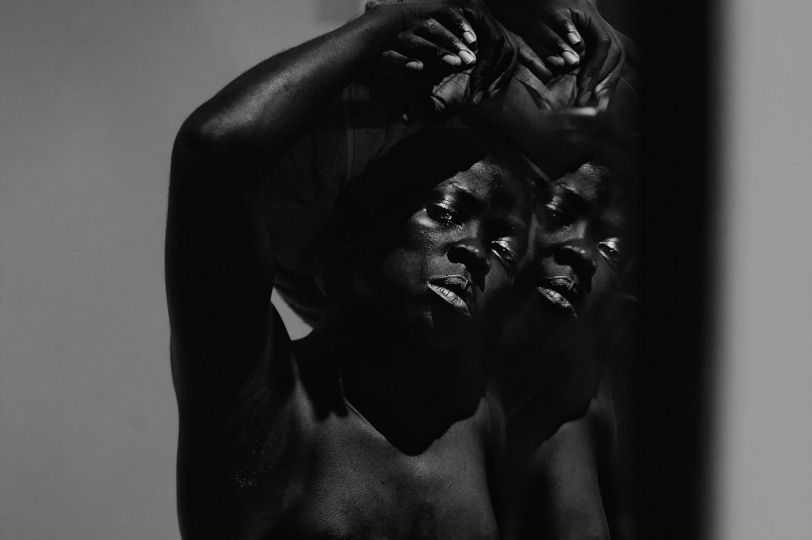Taschen recently published Lynn Goldsmith’s new book : Bruce Springsteen & The E Street Band : Darkness On The Edge Of Town.
Lynn gave us the following text to share:
I consider myself incredibly fortunate to have witnessed some of the writing, recording, preparation for the album release and then the tour of Bruce Springsteen and The E Street Band for Darkness on The Edge of Town. It’s a rare occurrence when one experiences how an artist’s meter can arise so naturally and that it does so because it is the voice of a poet. I believe the people who realized first that Bruce was a revolutionary of Spirit and put their talents in service to it were: Steven Van Zandt, Clarence Clemmons, Max Weinberg, Danny Federici, Roy Bittan, and Gary Tallent. They accepted his demands on their time, his requirements for being in this ‘band of brothers’, because each of them knew that lying deep in Bruce’s bones was a lyrical advocate of those who feel flawed. This did not mean that Bruce didn’t struggle with his own demons and afflictions, that he didn’t have episodes of self-doubt, which would trouble them. It meant that they all managed to do the best they could as the work ethic of ‘the boss’ stimulated individual will. It also helped that Bruce could melt ice with his humor.
The writing of Darkness took place basically at the house on Telegraph Hill Road, Holmdel, New Jersey, and the apartment at the Navarro Hotel on Central Park So. in New York City. Often walks or going to a film could break up the intensity of focus at the recording studio, The Record Plant. In some photographs here, is his bandaged hand which came from hitting a wall in the frustration of not being able to manifest in recording what he could hear in his head. From my point of view what William Wordsworth said aptly described Bruce. “a poet is someone who is affected more than other men by absent things as if they were present.”
We started doing shoots for publicity purposes shortly before the album was finished. I thought having studio portraits ready that could be considered for the magazine covers would help get the record more press. Bruce was clear that he did not want ’smiley’ photos as they wouldn’t reflect the tone of the album. He knew what he was comfortable wearing. He knew his hair and that it was better to shoot when it was dirty. He let me make some images in a studded leather jacket that was mine, but took it off within minutes as it really did not “fit” who he was. I find it hysterical now that this jacket is in the Rock and Roll Hall of Fame as his – the jacket I wore for 10 years and was worn by him for less than 10 minutes. It was not and is not “Bruce.”
When the tour started, he had a following on the east and west coast, but theaters in the middle of the country did not sell out. I remember one show in a hall that held about 300 where there were 3 people. Springsteen and the E Street Band played it like a sold-out house. Every performance, no matter how small, they gave everything they had – as if their lives depended on it. I’ve been on the road with other bands and never had I experienced sound checks that could go on for 3 or more hours, where the artist walked all over the entire venue to make sure no seat had a blocked view and that the music would fill the room like blood in their ears, that it would find their pulse. The care and attention which went into what would happen on stage that night was made by a man on a mission to provide a vehicle for change in himself as well as his audience. He threw himself into work with a passion as if that was the only thing that could save him from the depressions which continued to invade what others thought was a life made of dreams.
After the show, after meeting fans and signing autographs, we’d get on the bus and head to the next town. Bruce would listen to the playback of the evening’s performance and go over with the band what could be made better. He’d listen to what he’d said to the audience and then before the next show he would spend time on the bus and backstage writing, perfecting his stories, improving on the ones he had told and coming up with performance ideas that enhanced the tales he had to tell. Every show was unique. There was a plan, a set-list, however all knew that every moment was open for spontaneity. The band of brothers were ready for any musical or physical changes – adding to the ‘play’ Bruce provided by jumping off of speakers or running into the crowd. Even the lighting tech had to see his work as an integral part of the experience because nothing was programed. Follow spots moved to where the action was. All had to be ready to propel themselves into the moment if they were to truly rock the hearts of their audience. Bruce, the band, the team, made the crowd into a cult of believers in the power of rock and roll to change lives for the better. When you bought a ticket, it wasn’t just to go to a concert, it was to have a positive life experience. I saw first hand how Bruce and The E Street Band threw their bodies into work, how they pulled notes out of the air, how they made a musical performance suggest the failures and glories of being human. I hope you find these photographs as evidence to that experience.
Lynn Goldsmith
Lynn Goldsmith. Bruce Springsteen & The E Street Band
Taschen
Collector’s Edition (No. 201–1,978), each copy numbered and signed by Lynn Goldsmith
Edition of 1,778
Hardcover in clamshell box, 10.6 x 14.7 in., 9.07 lb, 364 pages
Edition: English, French, German
US$ 750
















